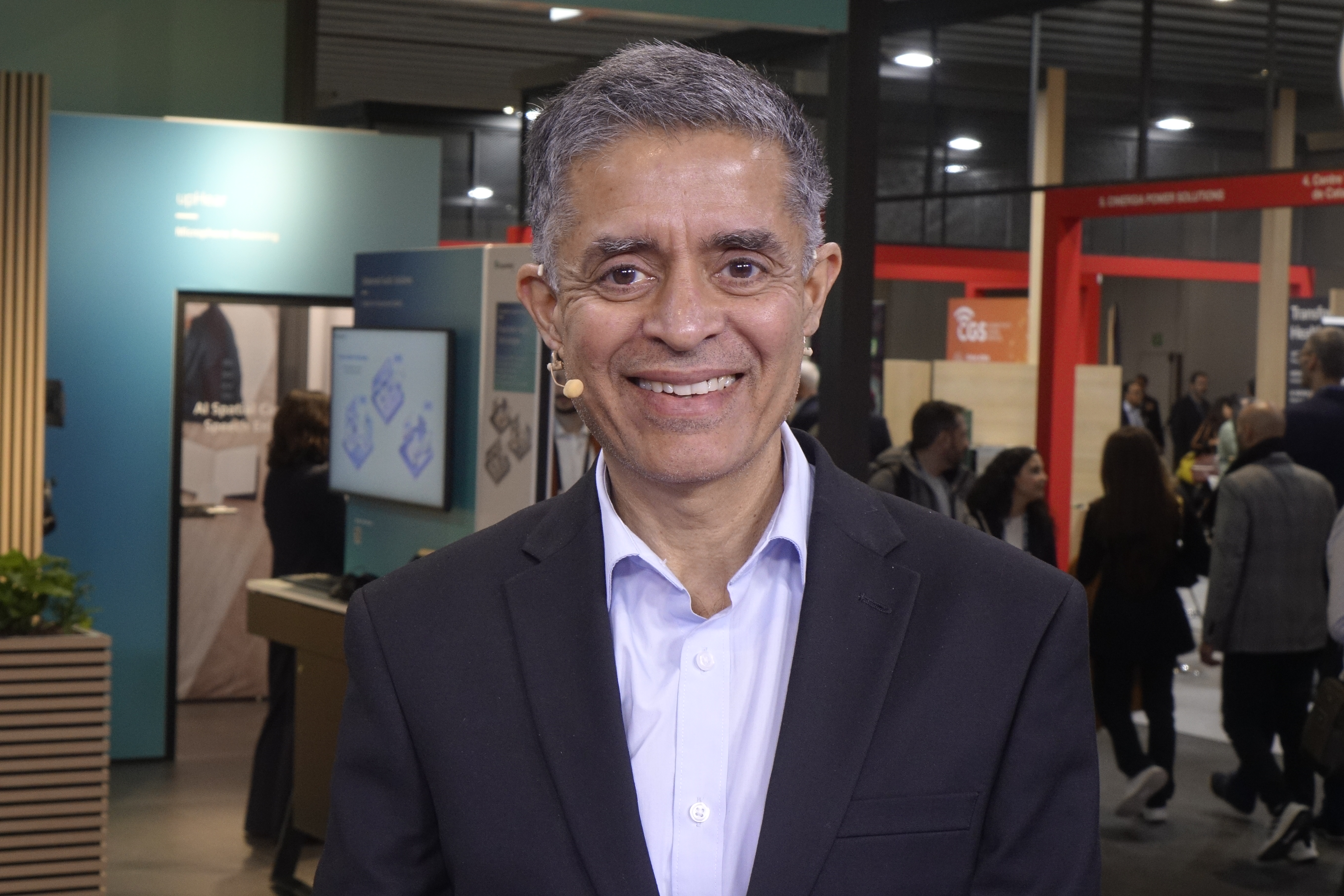 AI
AI
 AI
AI
 AI
AI
Telecom operators have struggled to monetize their networks beyond basic connectivity. With the rise of AI-driven applications, new optimization models are emerging to improve performance and revenue. Application-aware networking allows providers to allocate resources dynamically, ensuring critical applications such as AI workloads and healthcare systems get priority access.

Broadcom’s Sanjay Uppal talks with theCUBE about how VeloSky enables telecom operators to levarage AI.
A key innovation in this space is technological convergence. Unlike bundling services into a single bill, this approach integrates multiple networks — 5G, fiber and satellite — at the application level. This allows enterprises to optimize connectivity based on specific needs rather than relying on a one-size-fits-all model. Broadcom Inc. is at the forefront of this transformation, introducing solutions such as VeloSky, to help telecom operators seamlessly implement application-aware networking and unlock new revenue opportunities, according to Sanjay Uppal (pictured), senior vice president and general manager, VeloCloud Division, at Broadcom Inc.
“We announced our VeloSky product, which is our new product for convergence,” Uppal said. “Essentially, what it does is for telecom operators who are supplying technology and services to enterprises, it allows them to go on an application-by-application basis and combine or converge these networks together.”
Uppal spoke with theCUBE’s Dave Vellante and Bob Laliberte at MWC25, during an exclusive broadcast on theCUBE, SiliconANGLE Media’s livestreaming studio. They discussed how Broadcom’s VeloSky enables telecom operators to leverage application-aware networking and AI-driven optimization to enhance connectivity, improve performance and unlock new monetization opportunities. (* Disclosure below.)
Traditional telecom models prioritize network stability, but the next wave of innovation demands dynamic adaptability. Enterprises require networks that not only remain reliable but also intelligently allocate resources where they are needed most. The ability to combine different types of networks — such as 5G, satellite and fiber — ensures mission-critical applications remain operational, even in high-demand environments.
“You can combine two 5Gs together, you can combine satellite with 5G or with fiber — in fact, any type of network,” Uppal said. “What’s also really cool about this is that even a single link you can make it perform better. But of course, the whole idea is about converging different links together on the basis of applications.”
This concept extends beyond traditional high-availability models by focusing on performance optimization. By leveraging real-time data and AI-driven network adjustments, telecom operators can ensure that applications requiring low latency — such as AI-driven assistants or augmented reality tools — are prioritized. This application-aware networking also introduces new revenue opportunities for service providers, as businesses may be willing to pay for higher levels of guaranteed performance, Uppal explained.
“I think one of the things that’s very interesting … what we’ve been doing is measuring the gen AI applications on the network for some of our largest customers — those that have more than 1,000 endpoints,” he said. “What we are finding is that the traffic stream of these applications is very different from normal web applications.”
The surge in AI applications is forcing telecom operators to rethink how networks are built. Unlike traditional applications, AI-driven workloads often require significantly more upstream traffic than downstream. This shift presents new challenges, as most networks were originally designed with the assumption that downstream traffic would be the dominant factor, according to Uppal.
“Now, in certain cases you find that the upstream is 100 times more,” he said. “Now you think 100 times more, how can that be possible? But here I have my pair of Meta Ray-Ban glasses. Now these are meant for the consumer, but these glasses, they have video in the upstream direction and audio in the downstream,” Uppal noted.
As AI-powered devices and agent-based computing become more prevalent, networks will need to adapt to support the evolving traffic patterns. Real-time processing, machine-to-machine communication and data-intensive applications will require flexible network solutions capable of dynamically optimizing connectivity based on usage patterns. This shift is not just about efficiency but about enabling new capabilities that were previously impossible, according to Uppal.
“This agent is talking to that one, waiting for the response, and then behind the agent is sitting a small language model or a large language model,” he said. “When you do that, then the interaction between these agents is dependent on the network. No network; no agentic AI. And that’s really critical.”
The telecom industry is at a turning point. The convergence of AI, application-aware networking and dynamic connectivity is redefining how enterprises leverage network infrastructure. As operators explore new monetization strategies, the ability to intelligently allocate resources in real time could be the key to unlocking the full potential of next-generation connectivity, Uppal concluded.
Here’s the complete video interview, part of SiliconANGLE’s and theCUBE’s coverage of MWC25:
(* Disclosure: TheCUBE is a paid media partner for MWC25. The sponsors of theCUBE’s event coverage do not have editorial control over content on theCUBE or SiliconANGLE.)
Support our mission to keep content open and free by engaging with theCUBE community. Join theCUBE’s Alumni Trust Network, where technology leaders connect, share intelligence and create opportunities.
Founded by tech visionaries John Furrier and Dave Vellante, SiliconANGLE Media has built a dynamic ecosystem of industry-leading digital media brands that reach 15+ million elite tech professionals. Our new proprietary theCUBE AI Video Cloud is breaking ground in audience interaction, leveraging theCUBEai.com neural network to help technology companies make data-driven decisions and stay at the forefront of industry conversations.